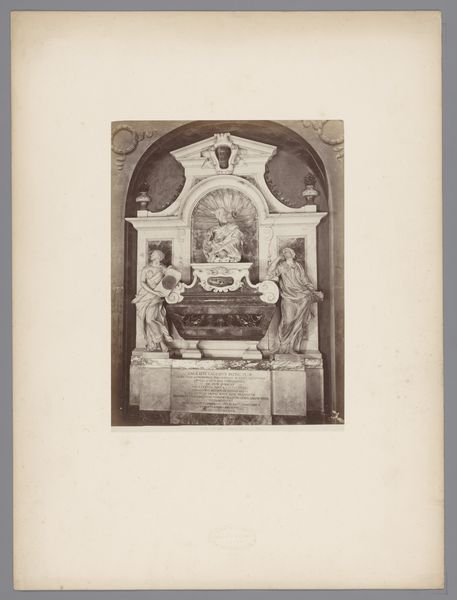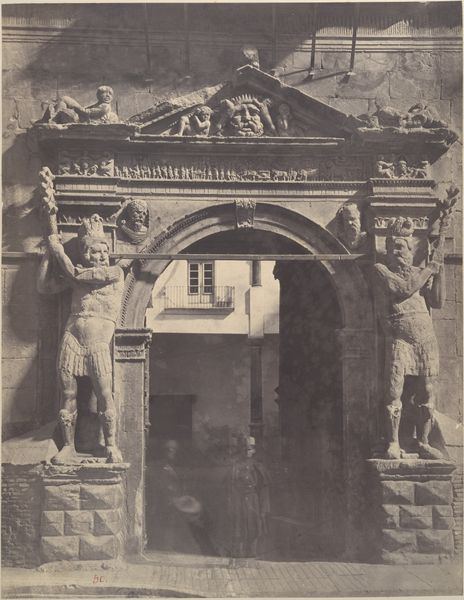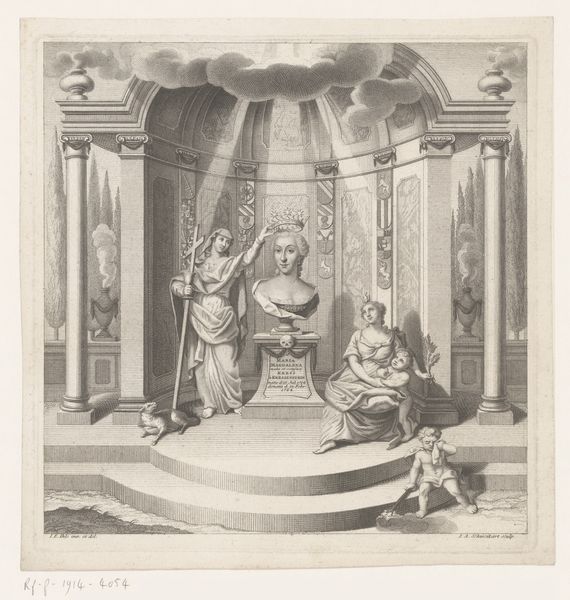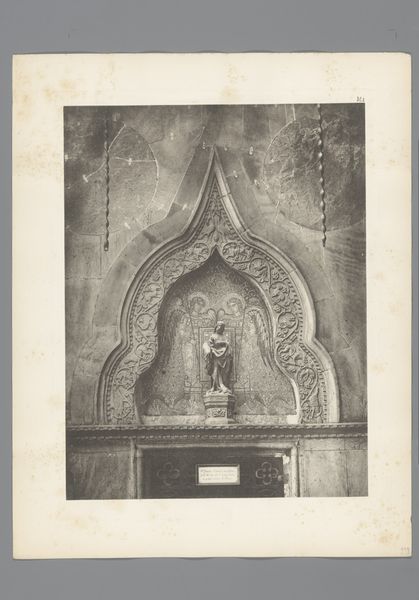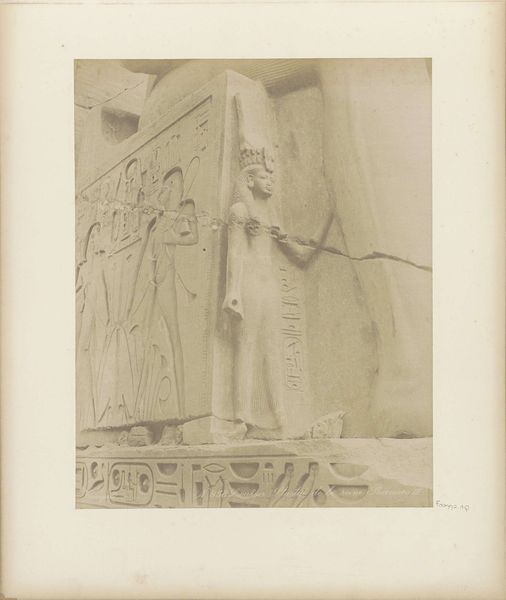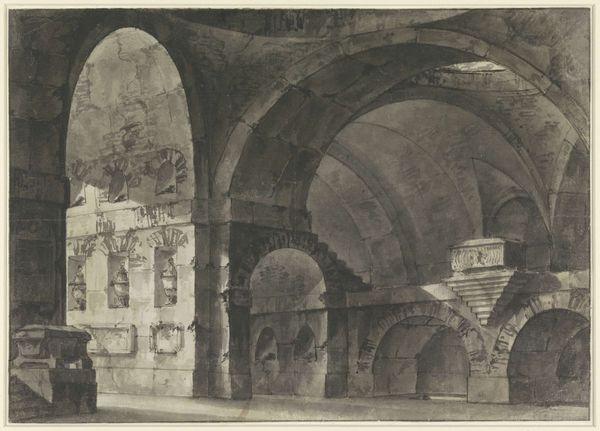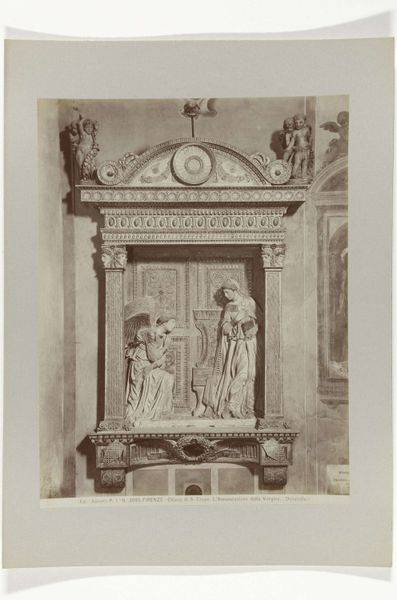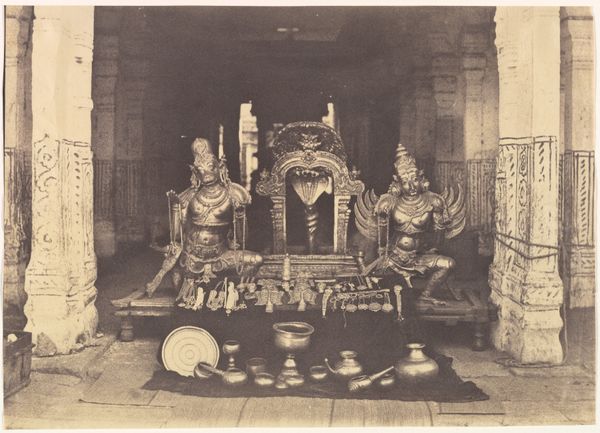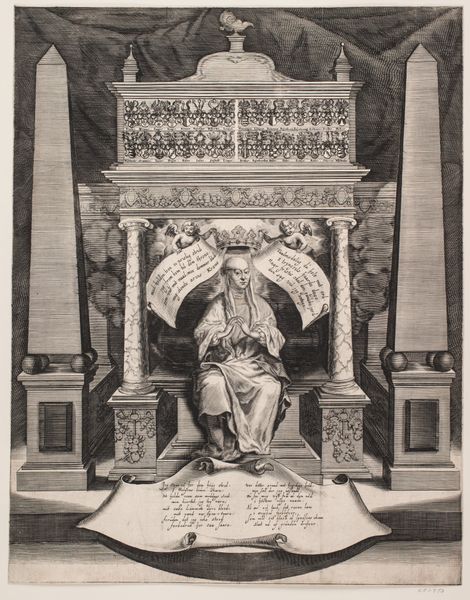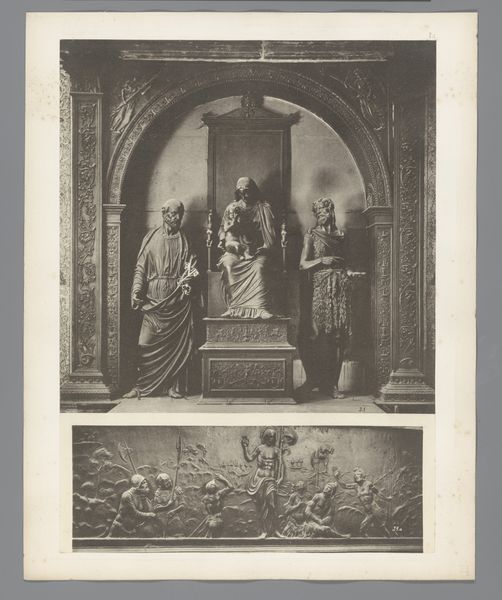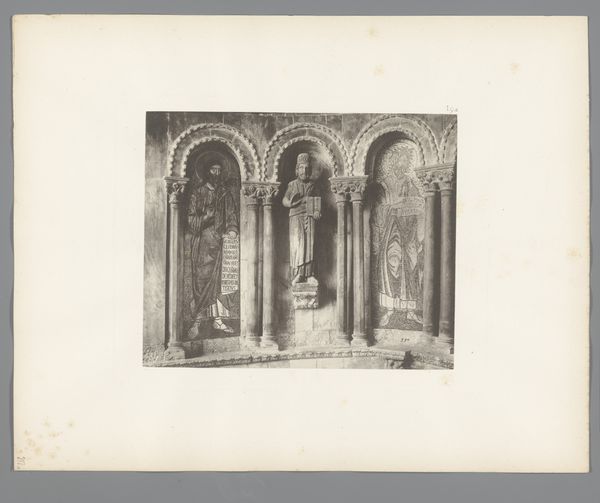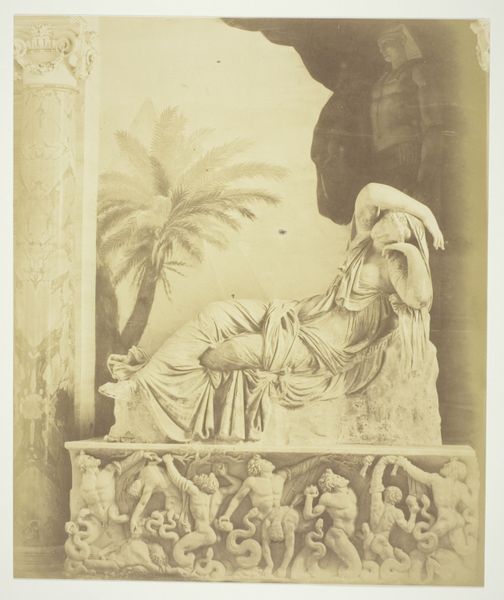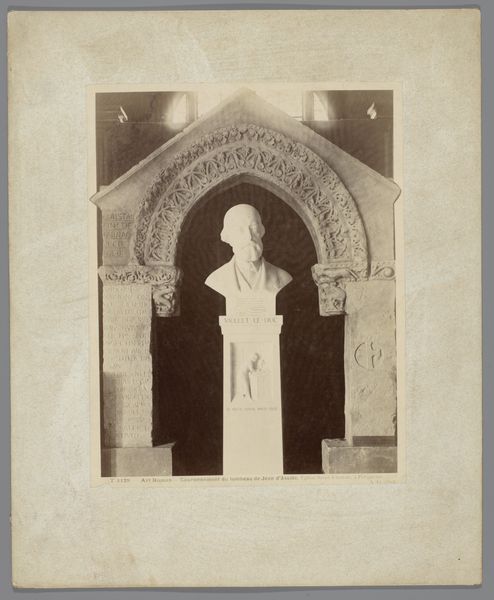
drawing, print
#
excavation photography
#
photo of handprinted image
#
drawing
#
aged paper
#
toned paper
#
photo restoration
# print
#
colourisation
#
unrealistic statue
#
carved into stone
#
19th century
#
statue
Dimensions: Sheet: 13 1/4 x 19 7/16 in. (33.7 x 49.3 cm)
Copyright: Public Domain
Curator: This print by Louis Jean Desprez, titled "Tomb with Death Enthroned as a Sphinx," was created between 1779 and 1784. What strikes you about it? Editor: Immediately, the sheer density of the image grabs me. It’s primarily monochrome but incredibly detailed; I’m drawn to the sense of mass in those stone blocks and, of course, the seated skeleton figure. Curator: It's quite macabre, isn’t it? I read it as a powerful commentary on power and mortality, the futility of earthly rule in the face of death, especially relevant considering the period, rife with its own power struggles and inequalities. The skeleton is crowned and holds a scepter, mocking symbols of authority. Editor: I agree. But looking closer, it's about the work that went into depicting it. It's hand-printed, so it shows a real engagement with process and labor. Think of the number of prints created! It suggests something about how readily ideas, even unsettling ones about class and death, can be disseminated and consumed as images. Curator: Yes, consider too, that the work appears to depict an ancient tomb, almost a colonialist gaze upon past civilizations—appropriating their symbols while missing their actual meanings. This adds another layer to how power, visual culture, and mortality intertwine in Desprez’s work. Editor: And look at how the architecture looms over everything. I wonder what stone it is meant to be? How it was sourced and how it was erected speaks to the monumental labor and resource extraction required to build power structures - even tombs that acknowledge the ultimate equalizer: death. Curator: A truly intersectional perspective—highlighting both historical power dynamics and the material reality that gives them shape. I appreciate how Desprez's print makes these ideas tangible, forcing us to confront uncomfortable truths about ourselves and our societies. Editor: Ultimately, it’s the printmaking process, the act of creating multiple reproductions, that implicates us—the viewers—in this danse macabre. This piece makes you ponder the industry of death as much as death itself.
Comments
No comments
Be the first to comment and join the conversation on the ultimate creative platform.
